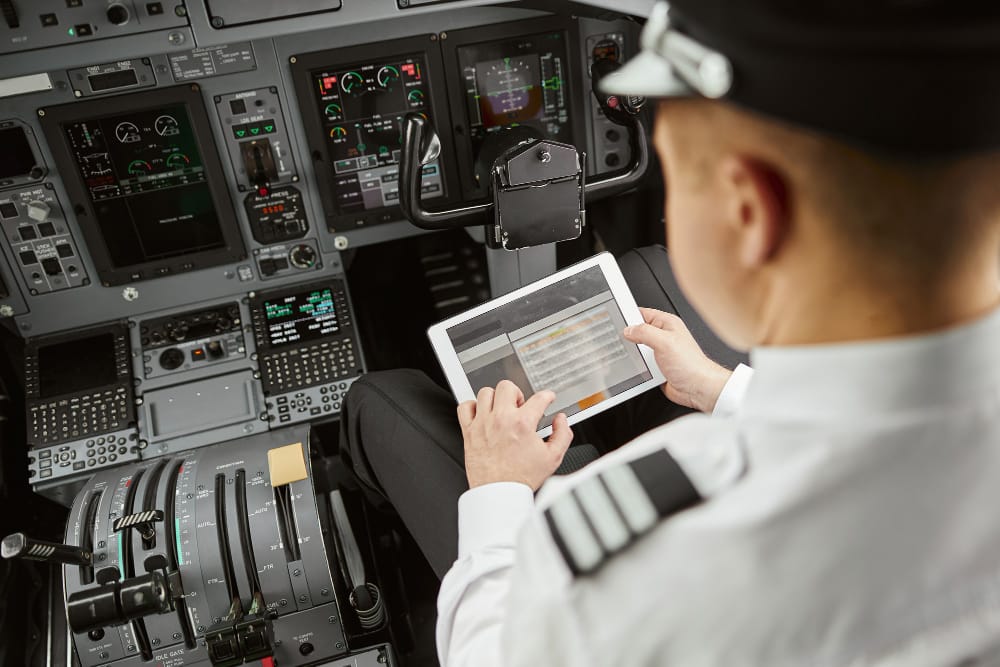Table of contents
ToggleHydrogen aircraft ATM are poised to revolutionize the aviation industry by offering a sustainable, zero-emissions alternative to traditional jet fuel. As global environmental concerns grow, the need for green air traffic control systems becomes more urgent. The ATM-EXCITE project is at the forefront of this transformation, modernizing Europe’s air traffic management (ATM) systems to accommodate the unique demands of hydrogen aircraft. This initiative aims to integrate advanced technology, optimize flight routes, and ensure that hydrogen aircraft can operate safely and efficiently within the evolving aviation ecosystem. Let’s explore the future of ATM systems and their role in facilitating hydrogen-powered flight.
The role of hydrogen-powered aircraft in aviation
Hydrogen-powered aircraft are a groundbreaking innovation in the aviation industry, designed to replace traditional jet fuel with hydrogen as a clean energy source.
The European Union has set ambitious climate neutrality goals, aiming to achieve net-zero greenhouse gas emissions by 2050. Hydrogen-powered aircraft are a critical component of this vision, aligning perfectly with the EU’s long-term objectives. By adopting hydrogen aircraft ATM, the aviation sector can significantly reduce its reliance on fossil fuels and contribute to achieving these environmental goals.
The environmental benefits of hydrogen aviation are substantial. Hydrogen-powered aircraft use either fuel cells, which generate electricity and emit only water vapor and heat, or combustion engines, which burn hydrogen and produce very low emissions—mainly water vapor and heat, with minor amounts of nitrogen oxides (NOx).
As a result, hydrogen-powered flight presents a cleaner, more sustainable future for the aviation industry, aligning both with zero emissions aviation and the global push for a greener, more sustainable planet.
Key challenges for ATM systems in adapting to hydrogen aircraft
Adapting hydrogen aircraft ATM into existing air traffic management systems poses several operational challenges:
- Differing Fuel Requirements: Hydrogen requires special storage—as a very cold liquid or under high pressure—which affects aircraft weight, space, and how far planes can fly. Air traffic management will need accurate, real-time data on aircraft fuel status to plan routes and refueling stops more precisely.
- Flight Dynamics: The unique characteristics of hydrogen-powered flight, such as changes in thrust and fuel consumption during different stages of flight, require updates to air traffic control protocols. This will involve integrating new flight performance data and technology to accommodate these aircraft’s needs.
- Integration of New Technologies: Hydrogen aircraft ATM will need to integrate advanced technologies, such as real-time fuel tracking and emissions monitoring. Air traffic management systems must be updated to handle these new data streams and ensure efficient routing and fuel management.
- Lack of Hydrogen Refueling Infrastructure: Currently, the lack of infrastructure for hydrogen refueling stations at airports poses a significant challenge. Without a widespread network of refueling stations, route planning becomes difficult, and airspace design must account for the availability of refueling points, potentially affecting flight durations and layovers.
- Safety Concerns and Regulatory Adjustments: Because hydrogen is highly flammable, updated safety protocols and international regulations are being developed to ensure safe handling, storage, and flight operations for hydrogen-powered aircraft. European and global aviation authorities are proactively addressing these requirements.
Infrastructure and route design changes for hydrogen aircraft
To support hydrogen-powered aircraft, ATM systems must evolve significantly in terms of infrastructure. A top priority is building hydrogen refueling stations at airports, ideally powered by renewable energy sources. This will ensure that the hydrogen used is truly green and supports sustainability goals. Additionally, airports will need to become green-certified, ensuring they meet sustainability standards that align with green air traffic control principles. This will involve adopting energy-efficient systems, renewable energy sources, and environmentally friendly airport facilities to reduce overall carbon footprints.
Initially, hydrogen aircraft are likely to operate on shorter, regional routes because their current range is less than that of traditional jets. Air traffic systems and routes will need to be optimized to support these flights and ensure access to refueling infrastructure when needed. Air traffic control systems will need to optimize routes, ensuring that hydrogen aircraft can reach their destinations with the necessary refueling infrastructure along the way. This may require revising flight paths, creating new air corridors, and considering alternate airports that offer hydrogen refueling.
Green air traffic control will play a pivotal role in ensuring the sustainability of aviation. By optimizing flight routes, reducing unnecessary fuel consumption, and minimizing delays, green air traffic control will help reduce the environmental impact of air travel. The integration of these advanced systems into ATM will not only support hydrogen aircraft but also help the aviation industry transition toward a more sustainable future, with a focus on reducing emissions and preserving the environment.

Long-Term sustainability and benefits of integrating hydrogen aircraft into ATM
The long-term sustainability of hydrogen-powered aircraft lies in their ability to significantly reduce greenhouse gas emissions, contributing to zero emissions aviation. By replacing traditional jet fuel with hydrogen, these aircraft eliminate carbon emissions, a key factor in combating climate change. Additionally, hydrogen-powered planes produce less noise pollution, offering quieter, more peaceful skies, particularly over densely populated areas and airports.
The broader environmental impact of transitioning to hydrogen aviation will benefit the European economy by promoting greener technologies, creating new industries focused on clean energy, and reducing the aviation sector’s reliance on fossil fuels. This shift will help Europe meet its climate neutrality goals while strengthening its position as a leader in sustainable aviation practices.
Over time, as hydrogen production and refueling infrastructure scale up, operational costs are expected to decrease. Airlines could benefit from lower fuel prices and reduced emissions-related taxes, but these advantages will grow as technology and supply chains mature. Moreover, the reduced environmental impact could lead to lower carbon taxes and emissions-related fees, making hydrogen aircraft a more cost-effective solution in the long run.
Continued innovation in ATM systems will be crucial to support these changes. As hydrogen aviation grows, ATM systems must evolve to optimize flight routes, manage hydrogen-specific needs, and ensure the safety and efficiency of operations, ensuring a seamless transition to a sustainable aviation future.
To learn more about how ATM-EXCITE is shaping the future of air traffic management and driving the integration of hydrogen-powered aircraft, visit our website and join us in advancing sustainable aviation for Europe’s skies.




